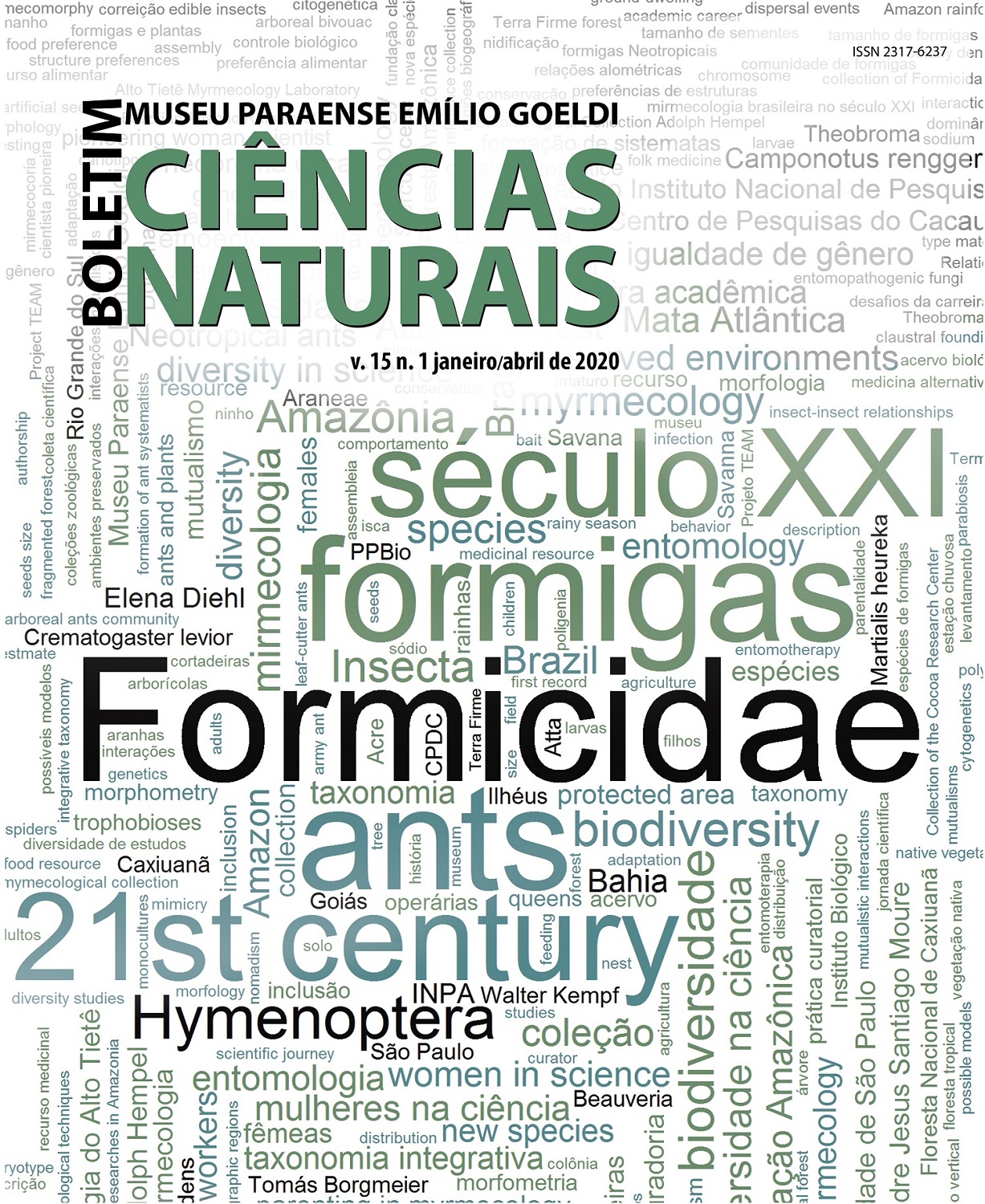Brazilian mirmecology in the 21st century: the collection of the National Institute of Research in Amazonia
DOI:
https://doi.org/10.46357/bcnaturais.v15i1.292Keywords:
Martialis heureka, Type-material, Mymecological collection, CurationAbstract
Based in the most biodiverse region on the planet, the collection of the National Institute of Research in the Amazon is home to millions of preserved organisms collected in the Amazon rainforest. The oldest collections are more than 60 years old and have already witnessed major changes in the Amazon biota. The myrmecological collection received its first specimens in the early 1970s. Currently, this collection has more than 300 thousand specimens mounted on pins, divided into 225 drawers, distributed in nine columns in an entire corridor between the compacting cabinets. The fluid preserved collection, the CD boxes and slides all together have an equal volume and perhaps a higher quantity of specimens. In total, the Formicidae collection includes representatives of 13 subfamilies and representatives from 108 genera, among Brazilian species and from other countries, as well as from other biogeographic regions. The collection also receives a lot of attention for being the world’s largest collection of males of the species Martialis heureka, with a total of 21 specimens. Considered one of the five biggest biodiversity repositories in the country, the collections of the Amazon biota maintained by INPA are invaluable, recognized nationally and internationally for their strategic importance and representativeness of the Amazon fauna, flora and microbiota.
Downloads
Published
Issue
Section
License
Publication means fully assigning and transferring all copyrights of the manuscript to the journal. The Liability Statement and
Assignment of Copyrights will be enclosed with the notice of acceptance. All the authors must sign the document and return it to the journal.








